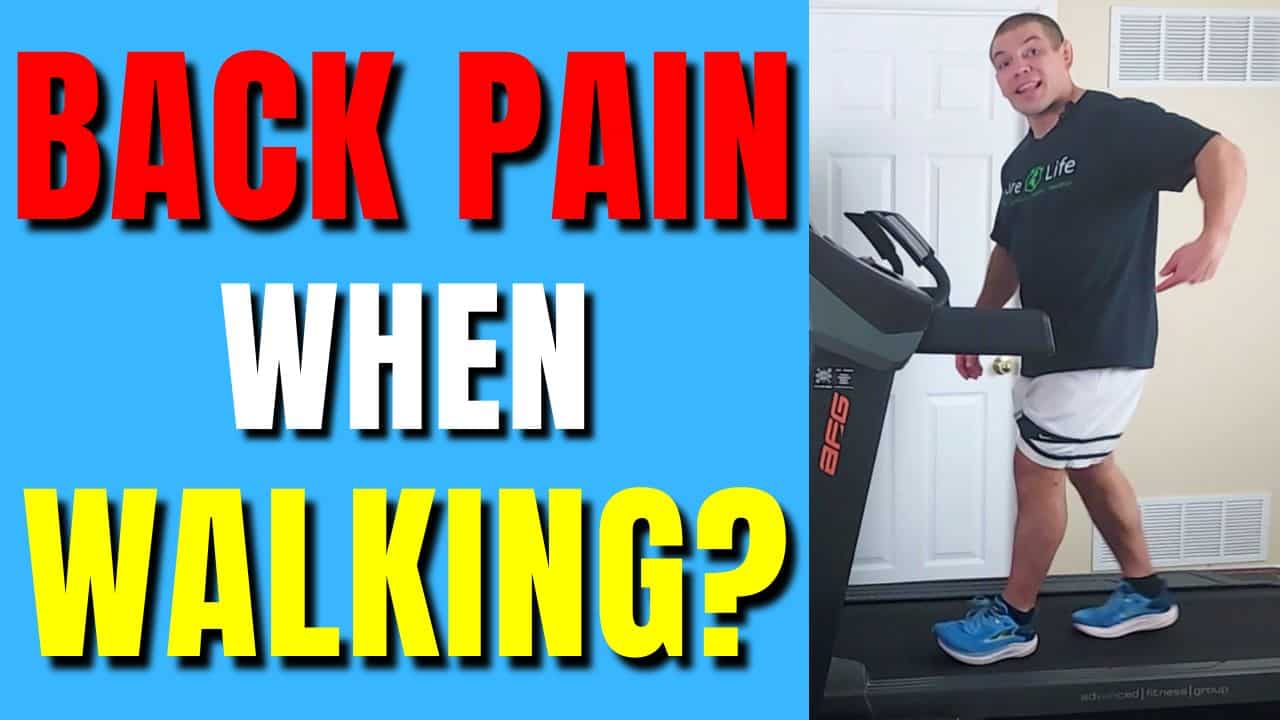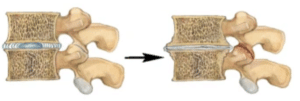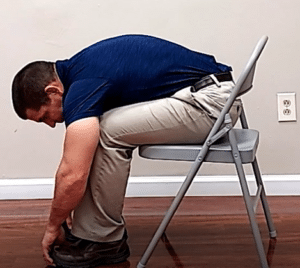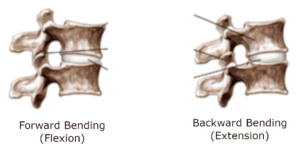Do You Get Back Pain When Walking?
Watch this 3.5-minute video to learn 5 tips to relieve back pain when walking.
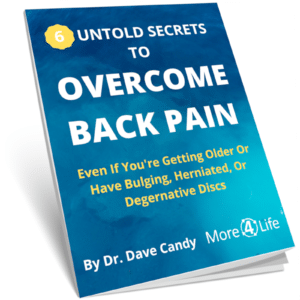
Back Pain When Walking Is Common But Not Normal
Many people age 60 and above have back pain when walking. However, just because you're over 60 doesn't mean you'll have to resign yourself to sitting on the couch or using a wheelchair for the rest of your life.
This post will teach you some easy ways to relieve sciatica and back pain when walking. However, it helps to first understand what causes back pin when walking in the first place.
Why Do I Get Back Pain When Walking?
There are a number of different problems that can cause back pain when walking.
The most common 2 types of problems are spinal stenosis and degenerative disc disease.
What Is Degenerative Disc Disease?
As you age, the discs in your spine naturally lose water content or dry up.
The disc in your back are made of a hard outer layer called the annulus fibrosis and a soft, gelatinous inner layer called the nucleus pulposis.
Under normal circumstances, the nucleus pulposis puts pressure on the outer wall of the annulus fibrosis and keeps the walls of the disc tall and sturdy.
As you age and the discs dry out, the pressure against the annulus fibrosis decreases.
This causes you to lose height in your discs, known as degenerative disc disease.
When the discs become closer together, the facet joints in the lower back start to press on one another. Furthermore the openings where the nerves come out called the intervertebral foramen also become narrower.
When the facet joints press together, this can cause back pain when walking.
What Is Spinal Stenosis?
As mentioned above, when the discs in your spine lose height, intervertebral foramen narrows. This is known as also called lateral recess stenosis. In fact, the word "stenosis" means "narrowing of a space".
Lateral recess stenosis can compress the nerve roots in your lower back and cause sciatica, leg fatigue, or leg weakness when walking. It is most common to have this type of stenosis either on one side of the back, or predominately on one side.
There's another kind of stenosis called central canal stenosis. This means narrowing of the spinal canal where the spinal cord runs.
This type of stenosis can cause difficulty walking and usually affects both legs. Leg fatigue when walking is the predominate symptom with central canal stenosis moreso than back pain.
Sitting Down Relieves Back Pain When Walking
If you have back pain when walking, one of the quickest ways to relieve the pain is sitting down.
Sitting down puts your spine in a relatively flatter position and takes pressure off of the joints and nerves in your lower back.
This can give nearly immediate relief.
If it doesn't, doing a forward bending stretch like this chair yoga pose can help further relieve the pain.
However, it's likely that you don't want to have to keep sitting down to relieve back pain when walking.
That means that you need to learn how to keep the pressure off of the joints and nerves in your lower back while you're actually walking.
How To Relieve Back Pain When Walking
Follow these 5 Tips To Relieve Back Pain When Walking:
1. Leaning Forward Can Relieve Back Pain When Walking
Standing too upright when walking compresses the joint in your back together an narrows the openings where the nerve roots exit you back to go into the legs.
Conversely, leaning forward opens the openings where your nerves exit the spine.
As shown in the image above, leaning forward separates your facet joint and opens the intervertebral foramen where the nerves leave the spine. This helps relieve back pain when walking
2. Walking Faster
When you walk faster with purpose, it encourages you to lean forward slightly.
3. Take Shorter, Quicker Steps
When you walk faster, you don't want to do it by increasing your stride length.
If you have tight hip flexors, taking long strides can cause lumbar extension. This in turn narrows the spaces where your nerves exit your spine.
Instead focus on walking faster by taking shorter, quicker steps. This will allow you to walk faster and farther without increasing lower back pain.
4. Push Off The Toes Of Your Back Foot When Walking
Pushing off the toes of your back foot help you propel forward and naturally start to lean forward.
Additionally, pushing off your toes helps you to swing your leg through to take a step. This in turn decreases how much hip flexor force you need to use as the hip flexors can compress the lower back.
5. Walk Uphill Or Increase The Incline On The Treadmill
Increased the incline on your treadmill, or walk uphill. This will encourage you and allow you to lean forward more naturally and take the pressure of the joints in your lower back.
Can Wearing A Back Brace Relieve Back When Walking?
Yes. Wearing a back brace can relieve back pain when walking. There are some type of back braces that are better than others though.
Most back braces just compress around your spine without doing anything to address the degenerative discs in your back.
However, when patients ask about back braces to help them stand or walk longer, I usually recommend a lumbar decompression brace.
This brace has air columns that inflate vertically when you pump it up using the included hand pump.
As the brace inflates, it gets taller and "lifts" your spine so that it takes pressure off of the joints, discs, and nerves in your spine.
Doing the can allow you to walk longer without back pain.
Although wearing a brace can be helpful, it's kind of annoying to have to always wear a back brace in order to be able to walk.
Back braces are a good short-term solution, but in the long-term it's still a good idea to find the root cause of your back pain.
Want To Find The Root Cause Of Your Back Pain So You Can Walk Longer?
Just tap the button below to request an appointment with one of our specialist physical therapists.

